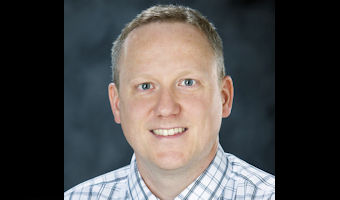The Institute of Nuclear and Particle Physics (INPP) presents Ben Cider of Mississippi State University, on “Beta Decay Studies of Light and Medium Mass Nuclei”, on Tuesday, Oct. 1, at 4 p.m. in Edwards Accelerator Lab, Roger W. Finlay Conference Room.

Ben Crider
Abstract: One of the key questions the study of nuclear physics seeks to address is, “How does subatomic matter organize itself and what phenomena emerge?” One phenomenon that occurs is the bunching of single-particle orbitals to form “shells.” Nuclei with filled shells are more stable relative to neighboring nuclei and is described as having spherical shapes. Rapid changes in nuclear structure can occur away from these closed shells and in certain regions of the nuclear chart, a single nucleus can exhibit both deformed and spherical shapes in a phenomenon known as shape coexistence. Understanding the components of this shape coexistence is important for connecting many ideas within the field, as shape coexistence lies at the intersection of single-particle (promotion of individual nucleons across shells) and collective nuclear behaviors. Recently, shape coexistence has emerged as a feature that perhaps exists in all nuclei rather than an isolated rarity in some nuclei. Experimentally establishing the shape of a nucleus and thus the presence of shape coexistence takes a wide range of experimental techniques. This experimental effort have been performed for 68,70Ni at the National Superconducting Cyclotron Laboratory, and comparison of the results with large-scale shell-model calculations firmly identify shape coexistence between deformed and spherical shapes in 68Ni and provide evidence for its extension along the isotopic chain to 70Ni. Along these same lines, initial results on 68Co from the same measurement will be presented.
In all, this talk will focus on presenting signatures of shape coexistence and the experimental techniques used to identify its presence in the Z = 28 region with a few glimpses into how these same studies are being undertaken in lighter-mass nuclei near the N = 20 island of inversion.



















Comments